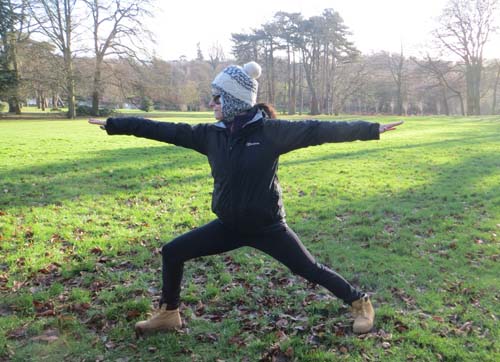February is Raynaud’s awareness month in the UK. As a sufferer of Raynaud’s Phenomenon (formerly known as Raynaud’s Syndrome) since childhood, I understand what an impact it can have on daily life in a cold, damp climate. We have plenty of this weather in the UK – typically from October to April (at least)!
What is Raynaud’s?
Raynaud’s Phenomenon is a common circulatory condition in the UK where it affects 1 in 6 (roughly 10 million) people. Yet surprisingly, very few people have heard of it (less than 4%) and many of those who have it, don’t realise it.
It occurs when the small blood vessels in the extremities (usually fingers and toes) over-react to changes in temperature. It’s thought this is caused by disruptions in how the nervous system controls blood vessels but the exact mechanism behind this is still not known. It can also affect the ears, nose and lips – I get it in all of these and also my chin and cheeks. This means in winter I’m often unable to talk when outside as most of my face goes numb – my husband often jokes that I should wear a balaclava! I have sometimes had to wear a woolly hat in summer due to earache and I’ve even experienced these symptoms indoors if sitting in a draught. Needless to say, air-conditioning is not popular with me!
Symptoms
The most obvious symptom is a change in skin colour. As the blood flow is restricted, the skin lightens and can even turn blue as the blood vessels react. Pain, numbness, tingling and restricted movement can be experienced.
As blood returns to the area affected, the skin becomes red. It can be painful and itchy, and if warmed too quickly chilblains can result (painful, itchy thickening of the skin) – I used to have these on my little toes all winter as a child and they are very uncomfortable!
Prevention
Keeping warm is the best prevention – easier said than done in the UK in winter! Wearing warm clothes, including a hat, is essential. Exercise can help as it increases circulation efficiency in the long term. Meditation and yoga can also help reduce anxiety and stress (another trigger). Eating a healthy diet, not smoking and reducing caffeine are also helpful. No surprises there then!
Yoga can help!
Practice of yoga asana can help increase circulation. Unlike other forms of exercise, this is not a quick fix – the circulation won’t suddenly increase dramatically (through vasodilation) in the same way as going for a run. However, as yoga often focusses on areas of the body other exercise doesn’t reach, this can have a positive effect. For example, practising hand balances improves circulation in the fingers and many standing balances include specific toe variations. The generation of inner fire (Agni) also filters out through the body and reaches the extremities.

Yoga practices for Raynaud’s
- Sun Salution (Surya Namaskar)
- Downward Facing Dog (Adho Mukha Svanasana)
- Warrior II (Virabhadrasana II)
- Triangle (Trikonasana)
- Chair (Utkatasana)
- Big Toe Pose (Padahastasana)
- Half Lotus Toe Balance (Padangusta Padma Utkatasana)
- Handstand (Adho Mukha Vrkasana)
- Crow (Bakasana)
- Bridge (Setu Bandhasana)
- Shining Skull (Khapalabahti)
Ayurvedic remedies for Raynaud’s
- Ayurvedic tea
- Self-massage with warm, herbal oil (abhyanga)
- Warming spices (cumin, ginger)
And finally…
I find that eating warm, nourishing, wholesome foods such as soups and casseroles is a great help. I dress in layers and always wear a hat, gloves and thick socks in winter, even when the weather is mild. If teaching or taking a yoga class in winter I wear ToeSox – they are great for protecting my feet against chilly floors! I also make sure I still get plenty of fresh air, gardening and walking – I’m just very well wrapped up when doing so!
Useful links
https://www.nhs.uk/conditions/raynauds/
